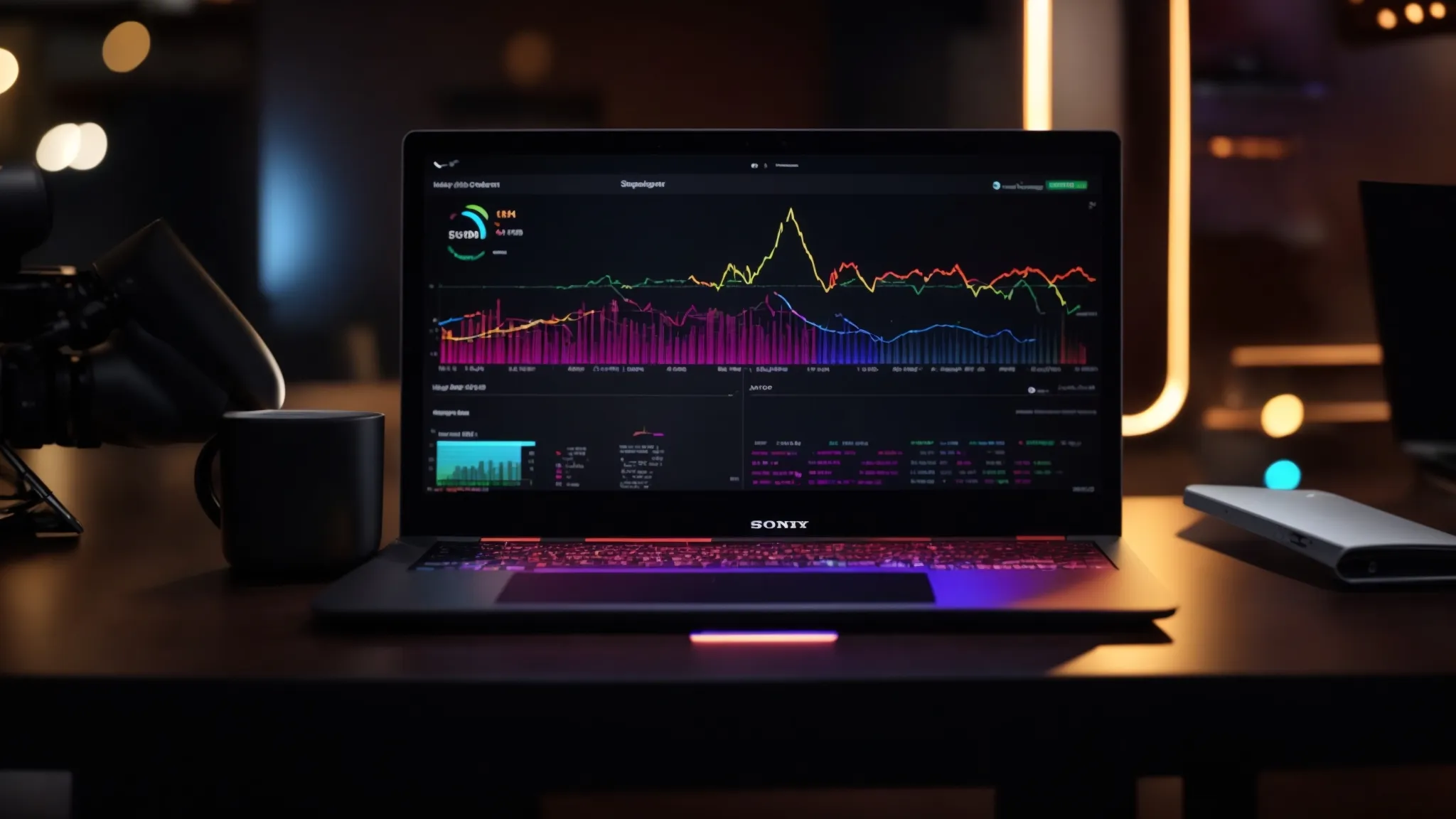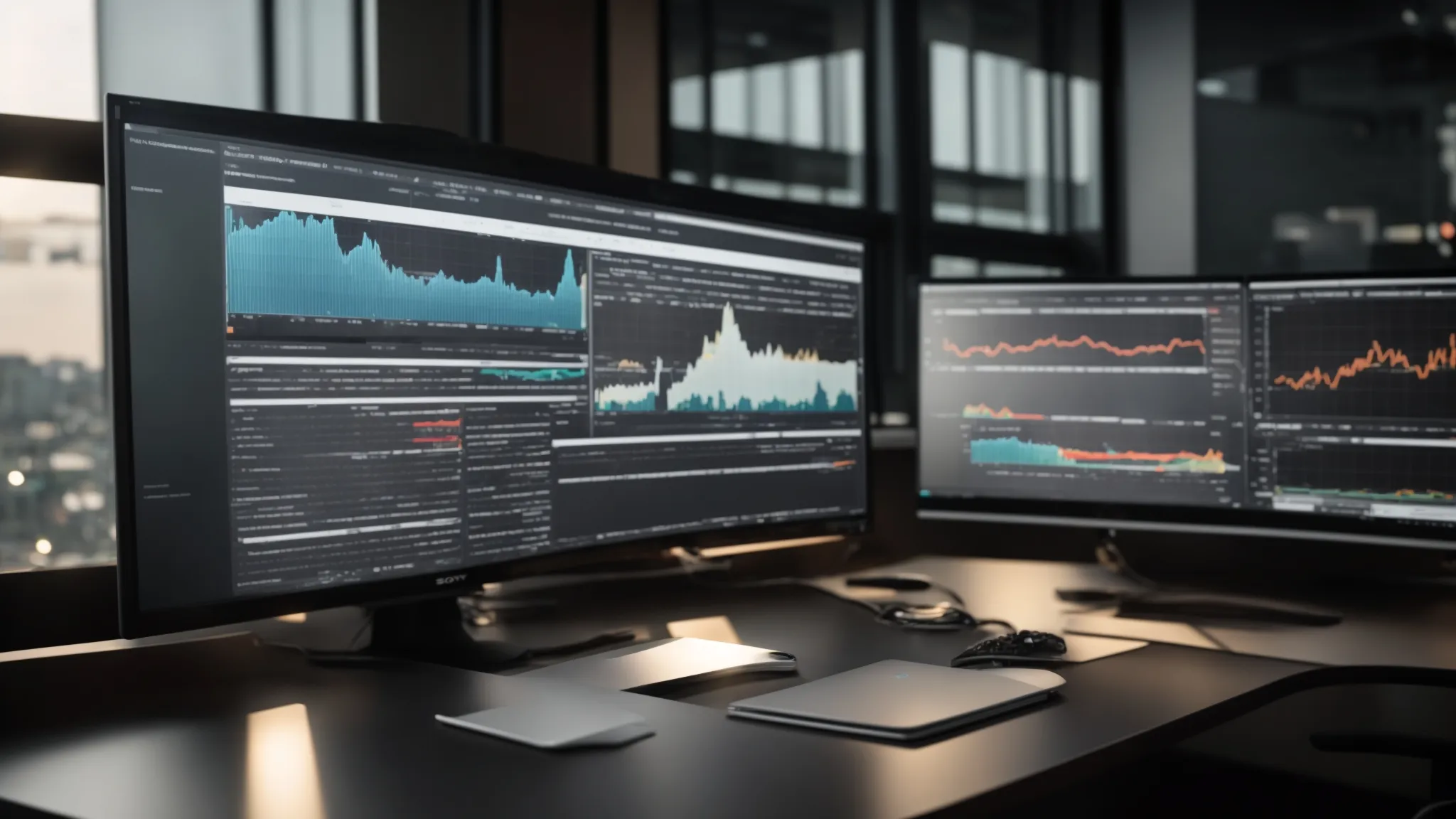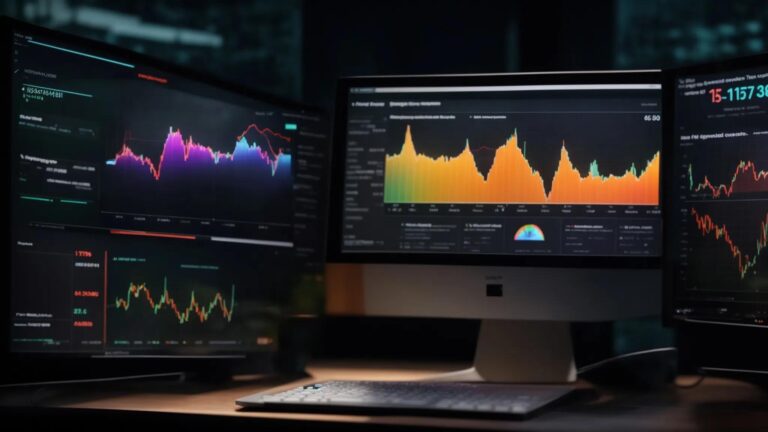Heads Up: When you purchase through links on our site, we may earn an affiliate commission at no cost to you.
For businesses investing in search engine optimization (SEO), measuring return on investment (ROI) is crucial to understanding whether their strategies are delivering meaningful results. Unlike paid advertising, where ROI can be calculated almost instantly, SEO ROI is more complex to track due to its long-term impact, multiple touchpoints, and indirect conversion factors. However, businesses that know how to measure SEO ROI effectively can allocate their budget wisely, improve marketing strategies, and ensure their SEO efforts lead to real revenue growth.
SEO ROI measurement involves tracking key performance indicators such as organic traffic growth, lead generation, conversion rates, and customer lifetime value (CLV). By combining SEO analytics, competitor analysis, and forecasting techniques, businesses can accurately determine how SEO contributes to profitability.
In this guide, we’ll explore how to measure SEO ROI, the essential metrics to track, and the best tools for calculating the financial impact of organic search optimization.
Key Takeaways
- SEO ROI measures profitability: Tracking SEO return on investment helps businesses assess organic search performance, lead generation, and revenue impact.
- Organic traffic and conversions are key indicators. Monitoring search rankings, website traffic, and lead conversions ensure that SEO is delivering real value.
- Customer Lifetime Value (CLV) vs. Acquisition Cost (CAC): Comparing long-term customer value to SEO expenses helps determine profitability.
- Backlinks and domain authority influence ROI: High-quality link building improves search rankings and boosts organic traffic potential.
- Use the right tracking tools. Google Analytics, Google Search Console, SEMrush, and CRM software provide insights into SEO’s financial impact.
- AI and automation enhance ROI measurement: AI-driven analytics, UX-based ranking factors, and predictive SEO modeling improve tracking accuracy.
- SEO attribution models are evolving: Multi-touch attribution ensures SEO efforts are credited across multiple touchpoints in the buyer’s journey.
- SEO requires long-term analysis: Unlike paid ads, SEO results compound over time, requiring businesses to track performance over 6-12 months for accurate ROI insights.
What is SEO ROI and Why Does It Matter?

1. Defining SEO ROI
SEO ROI refers to the financial return generated from SEO efforts compared to the investment made. It measures how well SEO campaigns contribute to business growth, lead generation, and revenue.
Unlike paid marketing, where businesses can quickly see cost-per-click (CPC) and immediate conversions, SEO delivers gradual, long-term benefits. The ROI from SEO is typically measured by evaluating organic search traffic, conversion rates, and the overall impact on sales.
For example, a real estate agency that invests in SEO-driven content marketing may not see immediate returns. Still, over time, their optimized blog posts and landing pages will attract high-intent buyers and sellers, leading to more inquiries and closed deals.
2. Why Measuring SEO ROI is Essential
Businesses must justify their SEO investment by proving its effectiveness in increasing brand visibility, traffic, and customer acquisition. Without proper ROI tracking, companies risk:
- Spending thousands on SEO campaigns without knowing if they generate leads.
- Overlooking high-performing SEO strategies due to a lack of measurable results.
- Focusing only on rankings rather than real business outcomes like sales and profit.
By measuring SEO ROI, businesses can:
- Optimize their marketing budget and shift resources to high-impact SEO efforts.
- Identify which content, keywords, and backlinks drive the most revenue.
- Compare SEO success against other marketing channels like Google Ads or email marketing.
Understanding how to track SEO ROI ensures that businesses make data-driven decisions and maximize their return on investment in organic search marketing.
- Instant feedback
- Valuable insights
- Actionable tips
Key Metrics to Track SEO ROI

To accurately measure SEO ROI, businesses must track a combination of performance indicators that reveal how SEO contributes to organic traffic, conversions, and revenue growth. Focusing on the right KPIs (Key Performance Indicators) ensures that businesses make informed decisions about their SEO budget, strategy, and long-term investment.
1. Organic Traffic Growth and Search Rankings
One of the most fundamental ways to measure SEO success is by analyzing organic traffic growth. When a website ranks higher in search engine results pages (SERPs), it attracts more visitors without relying on paid advertising. Increased organic search results indicate that SEO efforts are driving more potential customers to the site.
How to Track Organic Traffic and Rankings:
- Use Google Search Console to monitor search queries, impressions, and click-through rate (CTR).
- Track organic traffic trends in Google Analytics under the Acquisition report.
- Use SEMrush or Ahrefs to analyze keyword rankings and SERP movements over time.
Why It Matters:
- Higher search rankings lead to more visibility, leads, and conversions.
- Tracking CTR and search position trends helps refine SEO strategy.
- A steady increase in organic traffic proves that SEO efforts are paying off.
2. Lead Generation and Conversion Rate Optimization (CRO)
Driving traffic to a website is important, but SEO ROI is ultimately determined by how many visitors convert into leads or customers. If an SEO campaign is successful, it should result in higher lead generation and improved conversion rates.
How to Track Lead Generation & Conversions:
- Set up goal tracking in Google Analytics to measure form submissions, calls, and email sign-ups.
- Use heatmaps and session recordings (Hotjar, Crazy Egg) to analyze user behavior on landing pages.
- Track conversion rates (CRO) and touchpoints to see which pages drive the most customer actions.
Why It Matters:
- SEO traffic should lead to real business growth, not just website visits.
- Tracking conversion metrics helps businesses refine landing page optimization.
- A low conversion rate despite high traffic may indicate issues with UX, content, or call-to-action (CTA) placement.
3. Customer Lifetime Value (CLV) vs. Customer Acquisition Cost (CAC)
SEO ROI isn’t just about one-time sales—it’s about understanding the long-term value of customers acquired through SEO. Businesses must compare Customer Lifetime Value (CLV) to Customer Acquisition Cost (CAC) to assess whether SEO is a cost-effective marketing channel.
How to Measure CLV & CAC:
- CLV Formula:
(Average revenue per customer × Average customer lifespan) – Acquisition cost = CLV - CAC Formula:
Total SEO costs ÷ Number of new SEO-acquired customers = CAC
Why It Matters:
- SEO-driven customers often have higher CLV than paid ad customers.
- If CAC is lower than CLV, then SEO is generating a profitable return.
- Businesses can adjust their SEO budget to maximize high-value customer acquisition.
4. Backlink Growth and Domain Authority
A strong backlink profile directly impacts SEO ROI by improving search rankings, credibility, and referral traffic. Tracking backlink growth and domain authority provides insight into how well an SEO strategy is performing.
How to Track Backlinks and Domain Authority:
- Use Ahrefs, Moz, or SEMrush to monitor new and lost backlinks.
- Track Domain Authority (DA) and Page Authority (PA) to measure site strength.
- Identify which backlinks drive the most referral traffic and conversions.
Why It Matters:
- A high-quality backlink profile improves search rankings and organic visibility.
- Link-building efforts contribute to long-term SEO gains and higher ROI.
- Tracking referral traffic from backlinks shows which partnerships bring the most value.
By focusing on these SEO performance indicators, businesses can clearly see how SEO contributes to growth, profitability, and lead generation.
The Formula for Calculating SEO ROI

While measuring SEO ROI can be complex, a structured approach ensures businesses can track their profitability and cost-effectiveness. The most effective way to determine SEO return on investment is to use a clear formula that compares SEO-generated revenue to SEO costs.
1. Basic SEO ROI Equation
To calculate SEO ROI, businesses should use the following formula:
SEO ROI (%) = [(SEO Revenue – SEO Costs) ÷ SEO Costs] × 100
This formula helps determine whether SEO efforts are producing a positive financial return.
For example, if a business spends $5,000 on SEO services and generates $20,000 in revenue from SEO-driven leads, the ROI would be:
[(20,000 – 5,000) ÷ 5,000] × 100 = 300% SEO ROI
This means the business tripled its investment in SEO, proving it to be a high-value marketing strategy.
2. Advanced SEO ROI Forecasting
While the basic ROI formula provides a high-level view of performance, businesses can use advanced forecasting to predict long-term SEO success.
Factors to Consider in SEO ROI Forecasting:
- Customer Lifetime Value (CLV) – The total revenue expected from an SEO-acquired customer over time.
- Lead-to-Sale Conversion Rate – The percentage of SEO-generated leads that turn into paying customers.
- Average Revenue Per Customer (ARPC) – How much revenue each SEO-driven customer contributes.
- SEO Growth Rate – The expected increase in organic traffic, rankings, and conversions over months or years.
Businesses can use Google Analytics, CRM data, and keyword performance insights to make data-driven projections about future SEO profitability.
3. Assigning Monetary Value to SEO Conversions
To measure SEO-generated revenue, businesses should:
- Track goal completions in Google Analytics – Identify leads, form submissions, and phone calls resulting from organic traffic.
- Calculate the average conversion rate – Determine how many SEO-driven leads turn into actual sales.
- Estimate revenue per conversion: If an SEO lead is worth $500 in revenue, multiply that by the total number of SEO conversions.
For example, if a real estate agency generates 50 SEO leads per month, and 20% convert into sales, with an average commission of $3,000 per sale, the SEO revenue would be:
(50 leads × 20%) × $3,000 = $30,000 in SEO-driven revenue
4. Comparing SEO ROI to Other Marketing Channels
SEO should be compared with other marketing channels, such as Google Ads, email marketing, and social media, to determine its cost-effectiveness.
SEO vs. Google Ads ROI:
- Google Ads: Requires continuous spending to maintain visibility.
- SEO: Involves initial investment but delivers sustained organic traffic at no additional cost once rankings improve.
Businesses can determine whether SEO is more cost-effective than paid search by tracking revenue generated by SEO, customer acquisition costs, and lead conversion rates.
Using a structured approach to SEO ROI calculation, businesses can make informed decisions about their marketing budget, long-term SEO investments, and revenue expectations.
Best Tools for Measuring SEO ROI

Businesses need data-driven tools to measure SEO ROI accurately. These tools provide insights into organic traffic, keyword rankings, lead generation, and revenue attribution. The right tools also help track performance indicators, analyze conversion rates, and determine whether SEO investments are paying off.
1. Google Analytics for SEO Performance Tracking
Google Analytics is a foundational tool for measuring SEO ROI. It provides detailed insights into organic search traffic, user behavior, and conversions.
How to Use Google Analytics for SEO ROI:
- Track organic traffic growth under Acquisition > All Traffic > Channels.
- Set up Goals and Events to monitor SEO-driven leads, form submissions, and phone calls.
- Use eCommerce tracking to measure direct revenue from organic visitors.
- Analyze bounce rate and session duration to assess user engagement.
Why It Matters:
- It helps businesses track which SEO campaigns drive the most conversions.
- Provides clear attribution of organic traffic and lead generation.
- Allows businesses to compare SEO performance to other marketing channels.
2. Google Search Console for Organic Visibility
While Google Analytics tracks website traffic and conversions, Google Search Console (GSC) provides insights into organic search rankings, CTR (click-through rate), and indexing performance.
How to Use Google Search Console for SEO ROI:
- Monitor search queries and CTR to measure how effectively keywords attract traffic.
- Identify top-performing pages and optimize underperforming ones.
- Track impressions, clicks, and rankings to assess SEO’s impact on visibility.
Why It Matters:
- Helps refine keyword strategy for better SEO revenue potential.
- Provides insights into technical SEO issues that may affect ROI calculations.
3. SEMrush and Ahrefs for Competitive SEO Analysis
SEMrush and Ahrefs are two of the most comprehensive tools for measuring SEO success, backlink performance, and competitor benchmarks.
How to Use SEMrush & Ahrefs for SEO ROI:
- Monitor keyword rankings and estimated traffic value to measure search visibility.
- Analyze backlink profiles to assess SEO credibility and domain authority.
- Use traffic analytics to compare SEO-driven revenue vs. competitor performance.
Why It Matters:
- It helps businesses determine if their SEO efforts are outperforming competitors.
- Tracks cost-per-click (CPC) equivalent of organic traffic to measure SEO savings.
4. Customer Relationship Management (CRM) Software
For businesses focusing on lead generation, CRM platforms like HubSpot, Salesforce, and Zoho CRM help track SEO-driven leads and customer conversions.
How to Use CRM Tools for SEO ROI:
- Assign source attribution tags to track leads generated from SEO campaigns.
- Measure customer lifetime value (CLV) from organic search.
- Analyze how SEO traffic contributes to long-term revenue.
Why It Matters:
- It helps businesses track SEO’s impact beyond just traffic numbers.
- Ensures SEO-driven leads are nurtured and converted into paying customers.
5. Marketing Automation Tools for ROI Tracking
Marketing automation platforms like HubSpot, Marketo, and ActiveCampaign allow businesses to track SEO leads through the sales funnel.
How to Use Marketing Automation for SEO ROI:
- Set up lead scoring for SEO-driven conversions.
- Automate email marketing sequences for SEO-generated leads.
- Track multi-touch attribution models to see how SEO contributes to final conversions.
Why It Matters:
- It helps determine the true impact of SEO beyond first-click attribution.
- Provides insight into how SEO works alongside other digital marketing efforts.
6. Google Data Studio for SEO ROI Reporting
For businesses needing custom SEO ROI reports, Google Data Studio integrates data from Google Analytics, Google Search Console, and SEMrush into interactive dashboards.
How to Use Google Data Studio for SEO ROI:
- Create real-time reports on SEO performance, revenue growth, and lead attribution.
- Automate weekly and monthly SEO tracking reports.
- Visualize SEO ROI trends over time for better decision-making.
Why It Matters:
- Provides clear, customized insights into SEO profitability.
- Helps businesses adjust SEO strategy based on performance trends.
By leveraging these SEO tracking tools, businesses can accurately measure ROI, optimize campaigns, and maximize revenue potential from organic search.
Common Mistakes When Measuring SEO ROI

Measuring SEO ROI requires a structured approach, but many businesses make critical mistakes that lead to data misinterpretation, unrealistic expectations, and poor decision-making. Avoiding these errors ensures that SEO tracking remains accurate and aligned with business goals.
1. Ignoring the Long-Term Nature of SEO
One of the biggest misconceptions about SEO ROI is expecting instant results. Unlike pay-per-click (PPC) advertising, where businesses see immediate conversions, SEO takes time to deliver significant revenue impact.
Why This is a Mistake:
- SEO efforts, including content creation, link building, and technical improvements, often take months to show full impact.
- Google’s algorithm updates and search competition mean rankings fluctuate over time.
- Businesses that expect short-term gains may abandon SEO strategies prematurely.
How to Fix It:
- Measure SEO ROI over a 6-12 month period instead of looking for instant returns.
- Track organic growth trends rather than focusing only on immediate revenue spikes.
- Invest in consistent SEO efforts to build long-term brand authority and search visibility.
2. Failing to Track Indirect SEO Benefits
SEO contributes to more than direct revenue—it also impacts brand awareness, customer engagement, and retention. Many businesses make the mistake of measuring only direct sales from SEO leads while ignoring their broader influence.
Why This is a Mistake:
- SEO increases brand trust and credibility, making customers more likely to convert later.
- Many customers engage with a brand multiple times before making a purchase.
- SEO can reduce customer acquisition costs (CAC) by bringing in long-term, cost-effective leads.
How to Fix It:
- Track assisted conversions in Google Analytics to measure SEO’s indirect influence.
- Use multi-touch attribution models to see how SEO contributes to long-term customer acquisition.
- Analyze repeat visitors and retention rates to determine SEO’s impact on customer loyalty.
3. Not Differentiating SEO from Other Marketing Channels
SEO doesn’t work in isolation—it interacts with paid ads, email marketing, and social media. Businesses often fail to separate SEO-driven leads from PPC or referral traffic, leading to incorrect ROI calculations.
Why This is a Mistake:
- Overlapping data can make it seem like SEO isn’t driving revenue when, in reality, SEO and paid channels may be working together.
- Without accurate segmentation, businesses may misallocate their marketing budget.
How to Fix It:
- Set up custom tracking URLs and UTM parameters to identify SEO-generated leads separately.
- Compare SEO ROI vs. paid marketing ROI using Google Analytics attribution models.
- Use Google Search Console to measure organic search impact independent of other channels.
4. Using the Wrong Metrics to Calculate SEO ROI
Some businesses focus on vanity metrics like impressions, clicks, or keyword rankings rather than actual revenue impact. While these metrics provide insights, they don’t reflect SEO profitability.
Why This is a Mistake:
- High traffic doesn’t always mean high conversions.
- Ranking #1 for a keyword doesn’t guarantee that it’s driving revenue.
- A low bounce rate doesn’t necessarily mean the page is converting well.
How to Fix It:
- Focus on lead conversions, sales, and revenue growth instead of just traffic volume.
- Track goal completions and eCommerce transactions in Google Analytics.
- Measure SEO impact on customer acquisition cost (CAC) and customer lifetime value (CLV).
5. Ignoring SEO Costs When Calculating ROI
Many businesses calculate SEO ROI by focusing only on revenue and not factoring in total SEO expenses. Failing to account for costs like content creation, link building, and SEO agency fees can lead to overestimated ROI figures.
Why This is a Mistake:
- SEO requires an upfront investment, and failing to include these costs skews ROI calculations.
- Businesses may assume SEO is more profitable than it really is, leading to poor budget planning.
How to Fix It:
- Include all SEO expenses in ROI calculations, such as:
- SEO agency fees or freelancer costs.
- Content creation costs (blog posts, videos, landing pages).
- SEO software tools (SEMrush, Ahrefs, Moz).
- Use the SEO ROI formula:
(SEO Revenue – SEO Costs) ÷ SEO Costs × 100 = SEO ROI (%).
- SEO agency fees or freelancer costs.
- Content creation costs (blog posts, videos, landing pages).
- SEO software tools (SEMrush, Ahrefs, Moz).
6. Not Adapting SEO Strategy Based on ROI Insights
SEO is an ongoing strategy, and failing to adjust efforts based on performance data leads to stagnant results. Many businesses measure SEO ROI but fail to take action based on their findings.
Why This is a Mistake:
- SEO success requires constant optimization, not a set-it-and-forget-it approach.
- Keyword trends, competitor activity, and Google’s algorithms change frequently.
- Ignoring underperforming pages and outdated content can lead to ranking drops.
How to Fix It:
- Regularly analyze SEO performance metrics and adjust strategies accordingly.
- Optimize high-traffic, low-conversion pages to increase ROI.
- Stay updated on SEO best practices and Google algorithm updates.
By avoiding these common mistakes, businesses can ensure that SEO ROI tracking remains accurate, actionable, and aligned with overall marketing goals.
Future Trends in SEO ROI Measurement

As SEO evolves, so do the methods for measuring its return on investment (ROI). Traditional traffic and ranking metrics are no longer enough—modern SEO tracking focuses on user experience, AI-driven analytics, and multi-touch attribution. Understanding the future trends in SEO ROI measurement will help businesses stay ahead and maximize their organic search profitability.
1. AI and Machine Learning in SEO Analytics
Artificial Intelligence (AI) is transforming how businesses track, analyze, and optimize SEO ROI. Search engines like Google use AI algorithms to understand search intent and content relevance, which means businesses must adapt their SEO tracking methods accordingly.
How AI is Changing SEO ROI Measurement:
- AI-driven tools like Google RankBrain and BERT focus on user experience and search intent rather than just keywords.
- Predictive analytics in tools like SEMrush and Ahrefs help businesses forecast SEO trends and traffic growth.
- AI-powered chatbots and voice search optimization influence how customers engage with search results.
How to Adapt:
- Use AI-powered SEO tools for real-time keyword and content optimization.
- Leverage machine learning insights to predict SEO-driven revenue potential.
- Track user behavior beyond search rankings, such as dwell time, click-through rate (CTR), and engagement signals.
2. Multi-Touch Attribution Models for SEO ROI
Traditional SEO attribution models focus on the last-click method, meaning businesses only measure direct conversions from organic searches. However, SEO often influences multiple touchpoints before a customer makes a purchase.
Key Changes in SEO Attribution:
- Multi-touch attribution models now track how SEO works alongside PPC, email marketing, and social media.
- Google Analytics 4 (GA4) provides event-based tracking, allowing businesses to measure SEO’s contribution across the entire customer journey.
- Businesses can assign value to SEO touchpoints that assist in conversions rather than just focusing on last-click sales.
How to Adapt:
- Use Google Analytics attribution models to track assisted conversions from SEO.
- Measure how SEO traffic influences returning visitors and brand searches.
- Implement UTM tracking codes to monitor how SEO integrates with other marketing channels.
3. The Shift Toward UX-Driven SEO ROI Metrics
Google’s Core Web Vitals update has made user experience (UX) metrics critical ranking factors. Moving forward, SEO ROI will be measured based on user engagement rather than just rankings and traffic.
How UX is Shaping SEO ROI:
- Google prioritizes page speed, mobile usability, and engagement metrics in rankings.
- Slow-loading pages or poor UX design leads to higher bounce rates and lower conversion rates.
- Businesses will track SEO ROI based on UX-focused KPIs like dwell time, interaction rate, and conversion path efficiency.
How to Adapt:
- Optimize for Core Web Vitals by improving page speed, interactivity, and mobile usability.
- Track heatmaps and session recordings using tools like Hotjar to analyze user behavior.
- Reduce bounce rate by ensuring that SEO-driven traffic leads to engaging, high-converting pages.
4. AI-Powered Content and Automated SEO Tracking
As AI improves, automated SEO tracking will become standard. Businesses will rely on real-time SEO analytics, AI-driven content recommendations, and automated reporting tools to measure SEO ROI more accurately.
How AI Will Automate SEO ROI Tracking:
- AI-generated content optimization recommendations based on user engagement data.
- Automated SEO audits that detect ranking drops, technical issues, and content gaps.
- Predictive ROI calculations that estimate SEO revenue growth based on search trends.
How to Adapt:
- Use AI-based SEO tools like Surfer SEO, Clearscope, and MarketMuse for content optimization.
- Automate SEO tracking and reporting using Google Data Studio dashboards.
- Leverage AI-driven keyword insights to refine SEO strategy dynamically.
5. Hyper-Personalization in Local SEO ROI Tracking
Google’s local search algorithm updates are increasingly focusing on hyper-personalized search results. Businesses need to track how local location-based ranking factors influence SEO ROI.
Key Trends in Local SEO ROI:
- Google prioritizes proximity-based searches, meaning businesses need to improve Google Business Profile optimization.
- Local search rankings will depend more on customer engagement, reviews, and voice search behavior.
- Businesses must track SEO impact on foot traffic and local lead generation rather than just website visits.
How to Adapt:
- Use Google Business Profile insights to measure local search engagement and conversion rates.
- Implement local keyword tracking in tools like BrightLocal and Moz Local.
- Encourage more customer reviews to boost SEO rankings and visibility in Google’s Local Pack.
Preparing for the Future of SEO ROI Measurement
To stay ahead, businesses should:
- Adopt AI-driven SEO tracking tools for real-time insights.
- Refine multi-touch attribution models to measure SEO’s indirect impact.
- Optimize for UX-based SEO metrics, including Core Web Vitals and user engagement.
- Use automation and AI-powered reporting for accurate SEO ROI forecasting.
- Enhance local SEO efforts by tracking location-specific search trends and customer behavior.
SEO ROI measurement is becoming more data-driven, user-focused, and AI-powered. Businesses that stay ahead of these trends will maintain higher visibility, stronger engagement, and better lead-generation success.
Frequently Asked Questions
Why is measuring SEO ROI important?
It helps businesses determine if their SEO investments generate leads, revenue, and long-term profitability.
How do you calculate SEO ROI?
Use the formula: (SEO Revenue – SEO Costs) ÷ SEO Costs × 100 = SEO ROI (%).
What are the key metrics for SEO ROI?
Organic traffic, keyword rankings, conversion rates, customer lifetime value (CLV), and backlink growth.
Which tools help track SEO ROI?
Google Analytics, Google Search Console, SEMrush, Ahrefs, and CRM software provide detailed insights.
How long does it take to see SEO ROI?
SEO results take 3-12 months as organic rankings and traffic grow over time.
How does SEO compare to paid advertising in ROI?
SEO is a long-term investment that builds sustainable traffic, whereas PPC provides immediate but temporary results.
What is multi-touch attribution in SEO?
It tracks how SEO contributes to conversions across different marketing touchpoints rather than just last-click attribution.
Can AI help with SEO ROI tracking?
Yes, AI-driven SEO tools analyze data, predict ranking trends, and optimize conversion rates for better ROI measurement.
What are the biggest mistakes businesses make when measuring SEO ROI?
Ignoring long-term gains, focusing only on rankings, failing to track indirect SEO benefits, and not factoring in SEO costs.
Conclusion
Measuring SEO ROI is crucial for understanding how organic search efforts contribute to lead generation, customer acquisition, and revenue growth. Unlike paid advertising, SEO delivers long-term value, but tracking its true profitability requires analyzing organic traffic, conversion rates, and customer lifetime value (CLV) while factoring in SEO costs.
By leveraging tools like Google Analytics, Google Search Console, and SEMrush, businesses can track SEO-driven revenue, optimize their marketing strategy, and compare SEO ROI to other channels. As AI-driven analytics, UX-focused ranking factors, and multi-touch attribution models become more prominent, businesses must adapt their measurement techniques to stay competitive.
Ultimately, businesses that consistently analyze, refine, and adjust their SEO strategy based on ROI insights will achieve sustained growth, better search visibility, and increased profitability in the evolving digital landscape.















